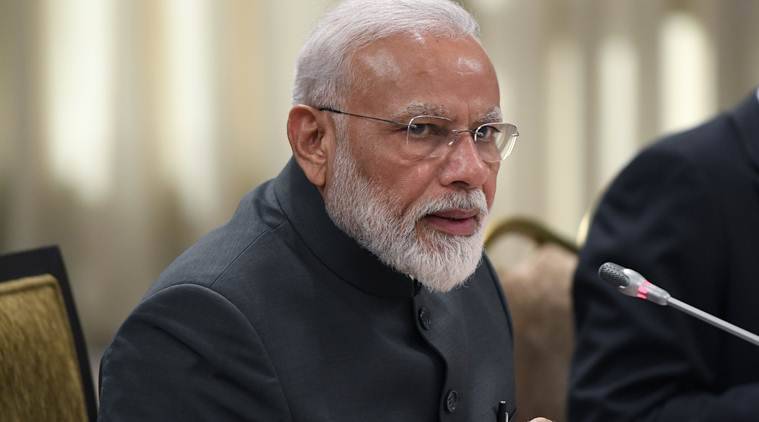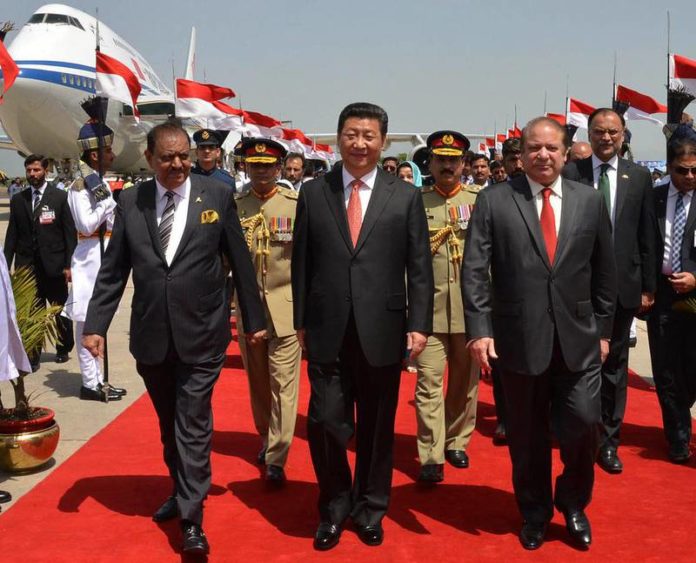The vision of economic prosperity and social development in Pakistan under Chinese cooperation has give rise to a new chapter in the history of South Asia. China’s economic rise with cooperation of neighbouring states preferred Pakistan as a reliable partner of Beijing which is no doubt a better option for Islamabad, but it has raised serious concerns of India. New Delhi, the only arch-rival state of Pakistan from South Asian region opposed the emerging Beijing-Islamabad cooperation by raising its concerns. In opposition to Pakistan’s good neighbourhood policy, Indian government preferred not only to oppose China’s economic rise but it also negatively viewed Sino-Pak economic collaboration. Initially, Indian Prime Minister Modi decided to stand against the China’s sponsored economic developments in Pakistan when Chinese President Xi Jinping announced his $46 billion investment plan for Pakistan in 2015. In reaction to this announcement, Modi cleared his position by calling it as an unacceptable China’s decision.
Beijing’s decision for investing in Pakistan was a part of China mega corridor project called China-Pakistan Economic Corridor (CPEC). The mega economic project is part of Xi Jinping’s greater vision of Belt and Road Initiative (BRI) which was previously known as One Belt One Road initiative (OBOR). The BRI is mainly a greater developmental strategy of China for the construction of a global network of land routes and sea ports. It is also considered a larger scheme of regional connectivity for the enhancement of China’s global reach through building of trade connection with the states located at different continents. The BRI fundamentally has greater reliance on CPEC which includes Pakistan in Beijing’s future calculations. In this way, the cooperative bonds between Pakistan and China further strengthened under President Xi Jinping’s revelation of CPEC in 2015.
In response to CPEC, the Modi administration showed its aggression at various local and international forums by criticizing China’s BRI. India’s reaction to Pakistan’s economic development and Islamabad’s improving regional and international standing is not surprising. An analytical overview of subcontinent’s history immediately after the partition in 1947 and the British colonial retreat immediately after the Second World War provides numerous occurrences and evidence of India’s Hindu leadership trying to malign Pakistan in world politics. After the creation of Pakistan, the era of cold war politics forced India to stand against Pakistan’s good neighbourhood policy which compelled China to help Pakistan against Indian regional belligerent designs. Beijing’s decision of helping Islamabad against New Delhi was the result of the Sino-India war over Tibet in 1962. An aggressive decision by the Nehru administration led to the 1965 war with Pakistan. Furthermore, Indira Gandhi’s decision of detonating nuclear devices under the so-called peaceful aspiration in 1974 and New Delhi’s involvement in internal crisis of Pakistan in 1971 forced Pakistani leaders to enhance cooperative ties with China. The increasing bilateral relations between two neighbours, China and Pakistan, served to greatly disturb the Hindu leadership in New Delhi.
The bilateral multidimensional collaboration between China and Pakistan became an unpleasant factor for India, and Hindu leaders started to criticize the growing Sino-Pak bilateralism. The leading state authorities from New Delhi attempted to criticise Pakistan and Islamabad’s friendly foreign relations with great powers generally, and China particularly. Such development further forced Hindu leaders to activate their anti-Pakistani lobby in the international system. In order to enhance its friendly ties with the world beyond neighbours, India preferred to create an alliance with those states supporting the Indian position in the South Asian politics. The search for friends that could uphold New Delhi’s standing in the regional as well as international politics further forced the Hindu leaders to follow the maxim of ‘enemy of my enemy is my friend’. The ancient proverb of Sanskrit and the foundational stone of Indian strategic thinking, in this way, convinced the leading security architectures of India to formulate friendly ties with the states which are against Pakistan or Pakistan’s role in the world politics.
Indian strategic thinking was the main driving forces behind New Delhi’s foreign relations. The maintenance of friendly ties with the world beyond neighbours forced India to consider cooperative partner the states outside the South Asian region. The persuasion of such principles in the main mechanism of Indian foreign policy crafted a specific pattern of Hindu leaders for looking toward the world. So, the Indian strategic worldview construed strictly on anti-neighbourhood behaviour dictated Hindu leaders to respect the nations besides neighbours which specifically resulted in an anti-Pakistani and anti-Chinese policy. New Delhi’s toxic visualization of Beijing and Islamabad not only resulted in various clashes, but it has caused major wars in the South Asian history. During the days of Soviet- American confrontational politics of cold war, it was Nehru who decided to align with Moscow and let the major powers jump into the newly decolonized subcontinent.
The genesis of Indian strategic thinking is inherited in Mauryan Empire founded by Chandragupta Maurya in 322 BCE. A loyal strategist and a prodigious philosopher of Mauryan Empire, Chanakya, laid the foundations of Indian strategic thinking. In his ancient work, Arthashastra, he defined the treatise for managing the major state matters. He formalized the principles of political, economic and military affairs of a state. Chanakya, also known as Kautilya and Vishnugupta, provided his work on military in Sanskrit language and his principles became the foundational stones of Indian strategic thinking. In this way, Kautilay became the Indian Machiavelli, and his work provided the basis for managing major state affairs. Indian strategic culture influenced by Kautilya became an undeniable feature of Indian political system. The continuation of traditional strategic Indian mind-set structured on Kautilyan maxims was properly promoted by Hindu leaders after securing independence from British Raj.

The reflection of Arthashastra in Indian foreign policy became an undeniable feature of New Delhi’s foreign relations. Presently, the fourteenth Prime Minster of India and a renowned politician of Bharatiya Janata Party (BJP), Narendra Damodardas Modi, followed the traditional features of Kautilyan thinking and properly incorporated them to New Delhi’s foreign relations. After taking office on May 26, 2015 Modi introduced various reforms in the traditional foreign policy mechanism and in order to implement the hegemonic designs of its strategic thinking, Modi initiated a massive campaign against neighbouring countries. The improvement of Indian position in the international system by enhancing New Delhi’s influence in the South Asian politics while pursuing belligerent regional approach parallel to the maintenance of cooperative ties with the extra-regional states became the two main approaches of Modi regime.
The quest to uplift his country in world politics, Modi’s government showed its determination for opposing every step taken by Pakistani government for the economic progress, political development, and societal harmony in the country. Presently, the scope of economic development under the greater vision of CPEC has been aggressively objected by India. The leading political authorities working in Modi administration decided to stand against Sino-Pak economic cooperation which is indirectly an opposition to the emerging bilateral ties of two territorially adjoining nations. The unjustified objection of New Delhi’s political figures, in this way opened up another area for India-Pakistan hostility. Hindu leaders have intentionally (or unintentionally) ignored the significance of CPEC in South Asia. Modi’s critical visualization of CPEC under Beijing-Islamabad’s growing diplomatic closeness has just added another chapter in the hostile interaction of New Delhi and Islamabad. Both nations have started to see each other negatively by maintaining their traditional inflexible and incompatible national standings. In this way, further deterioration of Indo-Pak relations in the larger context can disturb the scope of regional connectivity though CPEC. Because the Chinese economic involvement through investment of mega financial plans in the South Asian affairs can change the fate of South Asian nations. It is an economic project for the enhancement of bilateral values between two countries instead of leaving any strategic features. Moreover, it is purely an economic project for the betterment of whole South Asian region, and the inclusion of more nations in this mega project will create more opportunities for participating states. Therefore, a positive overview of CPEC by Modi administration can change the South Asian economic outlook which will be beneficial ted for the whole region. Leading state officials from New Delhi need to appreciably view the emerging bilateral ties of Pakistan and China by departing from its traditional anti-neighbourhood policy.




